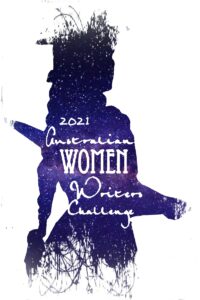Colonial women: ‘Daughter of the Hunter Valley’ by Paula J Beavan
In my deep dive into family history during the 2021 Covid lockdown in NSW, I realised that the Hunter Valley played a big role in my paternal ancestors’ lives. Both Great-Grandparents emigrated from England in the mid nineteenth century as children and lived out their lives in the Maitland and Newcastle regions. So it was with interest that I picked up Paula J Bevan’s novel which is set in the 1830’s along the Hunter River.
The heroine, Maddy, is newly arrived from England. Her father has established a farm there and planned to bring his wife and daughter to live in the colony with him; but Maddy’s mother died before she could embark on the voyage, and Maddy arrives alone to break the awful news. To her horror, the very next day her father drowns in the river and Maddy must decide what to do: return to England; or stay in NSW and try to make a new life for herself?
She decides to stay and finish creating the house and farm that her father had begun; but it is a very different world for a young woman from the green gentility of country England. The house her father promised is largely still plans on a page, so Maddy must live in a rough hut with two convict women, and she has to quickly learn how to run a property with only assigned convict labourers, and Daniel Coulter, the overseer, to work the land. There is heat, dust, unfamiliar wildlife and unaccustomed threats, and plenty of hard work. To her surprise, Maddy finds that the new life agrees with her as she gradually becomes part of the local settler community.
The original inhabitants of the region are the Worranua people; they get sidelong references in the narrative, which I found disappointing, though perhaps historically accurate; as many European settlers preferred not to think of the people whose lands they had taken. There is, however, a complicated cast of characters from properties nearby, who I found a little hard to sort out in my head. There are also convicts, bushrangers and an orphaned child.
I enjoyed Maddy’s development from a confused, grieving daughter to a more assured young woman forging a new life for herself. The author based some of Maddy’s character on colonial women who stepped up to run estates in their men’s absence, and I always love it when I read fiction based in part on real people or events.
Daughter of the Hunter Valley is primarily a romance, and I did find Maddy’s preoccupation with Daniel a little annoying after a while – as was her tendency to blush whenever she saw him!
The strength of the novel is in its finely observed portrayal of early colonial life away from the Sydney township; the new environment in which the settlers found themselves, and the hardships they faced. I could picture my own ancestors in similar circumstances in similar locations. Knowing that they, too, had dispossessed Worranua in order to create this new life is uncomfortable, but it is part of my personal history and the history of this country. There are, no doubt, echoes of Maddy’s story in the lives of many of those who came as colonisers to this country.
Daughter of the Hunter Valley is published by HarperCollins in September 2021.
My thanks to the publishers for a review copy.


